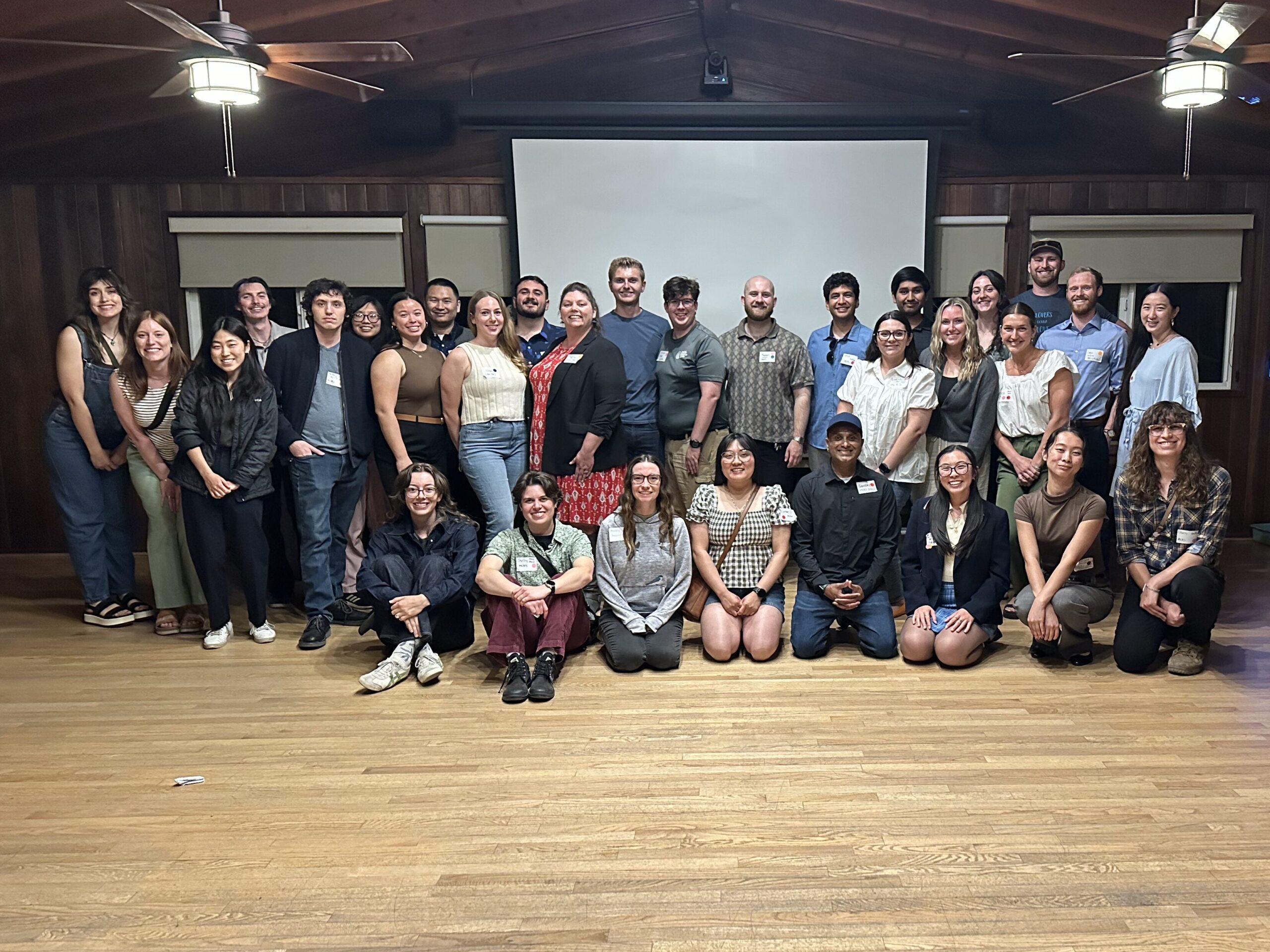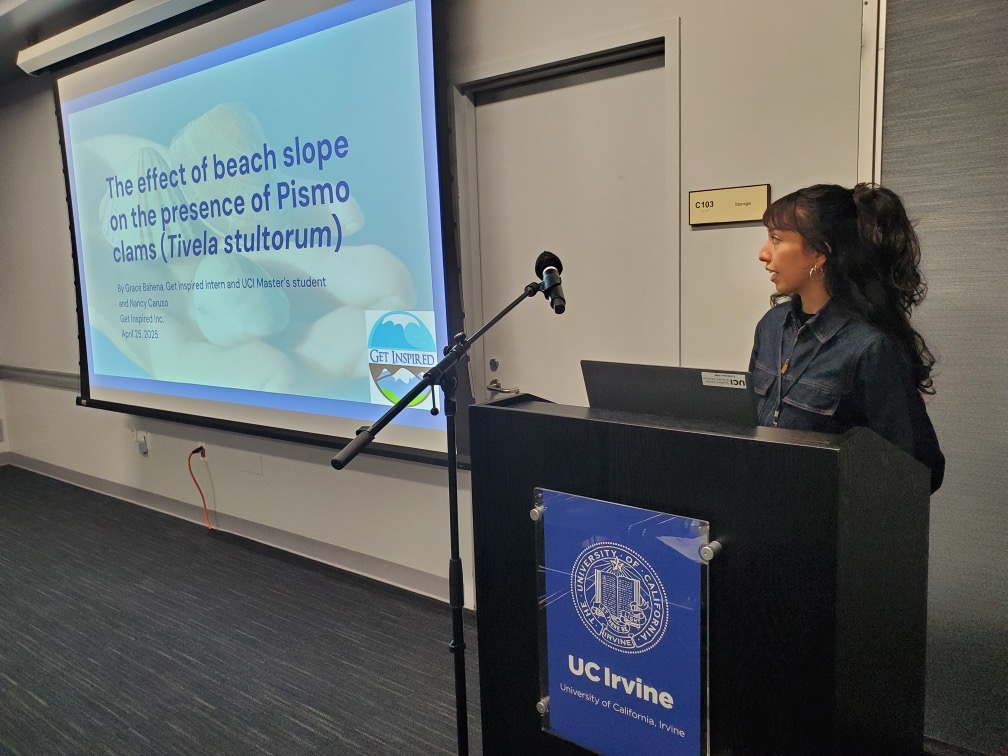Student Blog: Lyuyi Chen
Preserving Oak Woodlands to Wonderlands: What to Do in the Vortex of Climate Change?

I will never forget the most horrible morning in early November of 2020: I woke up at 7 am and was shocked by the orange sky outside my windows and a strange burning smell in the air. The ash obscured the sun, turning the morning into a scene of dusk. Everything outside looked gloomy and lifeless, which made me wonder if I lived on the Earth that I am familiar with.
“Is the apocalypse approaching?” I asked myself, then unlocked my phone to try to know what was happening.
“The Silverado Fire is attacking southern Orange County, and the mandatory evacuation order is in effect…” When those harrowing headlines flowed into my eyes, I could not help worrying about the oak woodlands I visited for fieldwork last year in these burning areas.
“It may not be apocalyptic to us, but to the plant and animal friends living in the oak woodland habitat, it definitely is.” I started my day in a state of unease as I thought about that.
Oak woodlands, the vegetation type with the highest biodiversity in California (Allen-Diaz et al. 2007), provide essential habitat for different organisms, including many threatened and endangered species (especially some avian and invertebrate ones). Oak woodlands are declining. They are suffering from a series of environmental threats caused by climate change and anthropogenic activities, such as human development, drought, wildfire, invasive pests, and introduced pathogens. This decline has put the species living in these habitats in peril (Lopez-Sanchez et al. 2014, Reyneir et al, 2017, Pautasso et al. 2012, Coleman and Seybold 2008). We need to conserve and restore the damaged oak woodlands to save the life of species that depend on oak woodland habitats and to preserve these wonderlands for their offspring.
How it starts: Lost in the silent land
My first experience with oak woodland was terrible—after seven hours of walking in desolate areas with rugged trails and being exposed to strong sunlight, I got dizzy and dehydrated. We weren’t having an exciting adventure or making a movie about survival in the wilderness. We were conducting fieldwork of oak woodland health monitoring with UC Irvine Center of Environmental Biology. Led by two experienced field technicians, we learned methods to monitor oak demographics (diameter at breast height, tree height, dieback, exposure, canopy thinning, bark health, etc.) and pathogens (exit holes, distortion, symptoms, leaf spots, etc.). Measuring an oak tree usually took us several minutes, and the harsh environment of high temperatures and rough terrain increased the difficulty of our work. Those coast live oaks, scattered in the silent valley with rampant branches, seemed to say to us uninvited guests, “you are not welcome here.”
A day of intensive fieldwork exhausted me. However, what impressed me most was not my physical fatigue but the findings of our work–most oaks suffered from wildfire and Anthracnose pathogens. I realized that I underestimated the survival of oak trees although they seemed to live in such a stable environment. Absolutely, it would be harder to imagine how wildlife species live in these habitats—the adverse abiotic conditions made them more vulnerable to disturbances. All these shocking scenes I viewed encouraged me to do further research on conserving oak woodlands and help them get out of the woods.
How it goes: Explore possible conservation strategies
At the end of my first year of study in the Master of Conservation and Restoration program, we were required to choose our capstone project topic for the second academic year. Recalling my oak woodland monitoring fieldwork, I put the topic “Oak Woodland Conservation and Restoration” as my top choice without any hesitation. We aim to use remote sensing data to inform health assessments of oak woodlands, identify the relative health of oak woodland regions in Orange County, and explore effective ways to assess oak woodland microclimate conditions.
One of our key deliverables is a ranking system containing a series of oak health metrics to identify target restoration woodlands in Orange County. Metrics reflecting different physiological characteristics of coast live oaks include canopy thinning, epicormic sprouts, cankers, bark health, burn scars, and seedling & sapling scales. We will also attempt to incorporate the negative impacts of gold spotted oak borers and wildfires into the ranking system.
At the beginning of this project, we were confused about how to deal with 10 years of data and how to define the health level of each variable. By exploring initial data analysis in R, we have made heatmaps and bar graphs for data visualization. Because of a lack of previous studies on this type of ranking system, we are still searching for similar projects and getting new ideas for building the scale-based ranking system. One of our possible solutions is to conduct correlation analysis between different health variables and figure out how they affect each other and if the trend has changed.. We are not sure whether the ranking system we create can also be used for oak woodlands in other areas outside Orange County, but at least we can provide some recommendations regarding conservation and restoration among local woodlands to facilitate projects conducted by local stakeholders.
How it ends: Never ending!
There is still much work to do for our project, and although sitting in front of the computer to conduct massive data analysis is dull, we are doing the right thing to attempt to save these wonderlands for our plant and animal friends in oak woodlands. However, conserving oak woodlands is a long-term work, much more than a one-year project. We contribute something small but important to this formidable task, knowing that there is still a long way to go to recover these habitats.
References
Allen-Diaz B, Standiford R, Jackson RD. (2007) Oak Woodlands and Forests.
Coleman, T. W., & Seybold, S. J. (2009). Previously unrecorded damage to oak, Quercus spp., in southern California by the goldspotted oak borer, Agrilus coxalis Waterhouse (Coleoptera: Buprestidae). The Pan-Pacific Entomologist, 84(4), 288-300.
López-Sánchez, A., Schroeder, J., Roig, S., Sobral, M., & Dirzo, R. (2014). Effects of cattle management on oak regeneration in northern Californian Mediterranean oak woodlands. PloS One, 9(8), e105472.
Pautasso, M., Döring, T. F., Garbelotto, M., Pellis, L., & Jeger, M. J. (2012). Impacts of climate change on plant diseases—opinions and trends. European Journal of Plant Pathology, 133(1), 295-313.
Reynier, W.A., L.E. Hillberg, and J.M. Kershner. 2017. Southern California Oak Woodland Habitats: Climate Change Vulnerability Assessment Synthesis. Version 1.0. EcoAdapt, Bainbridge Island, WA.




